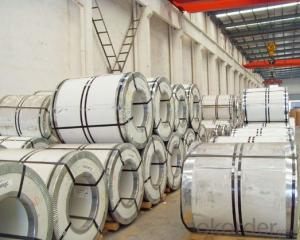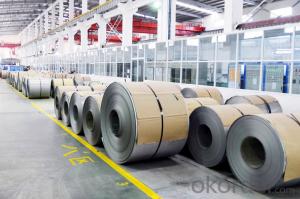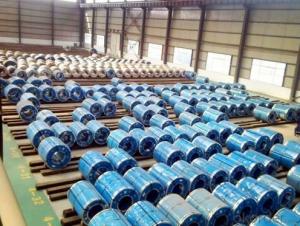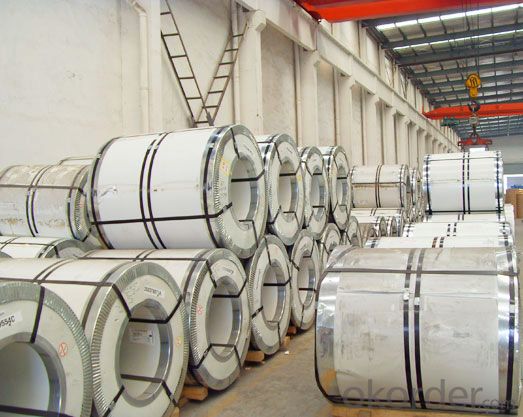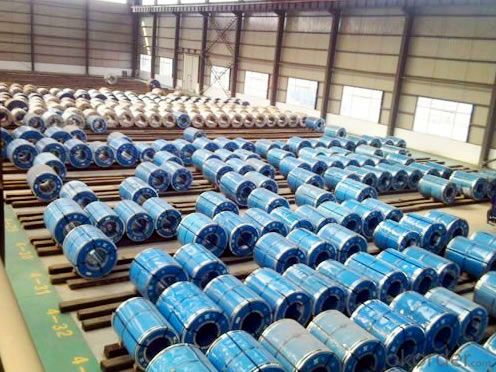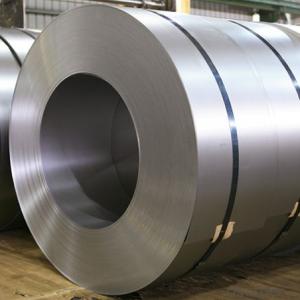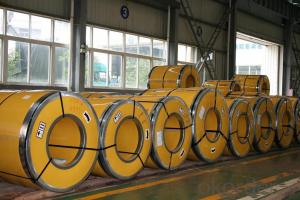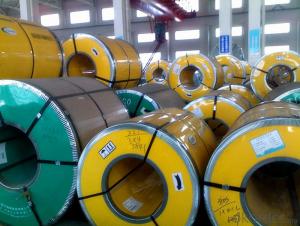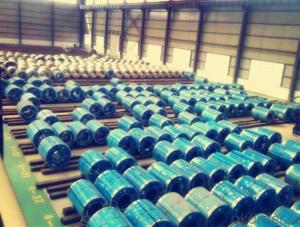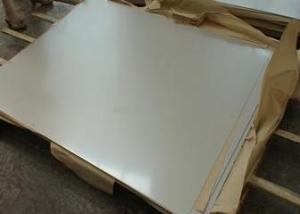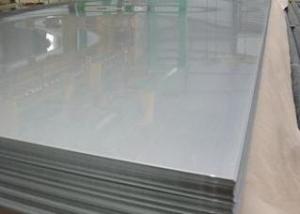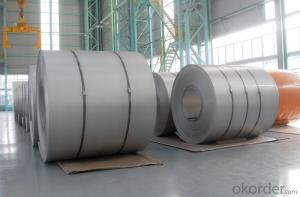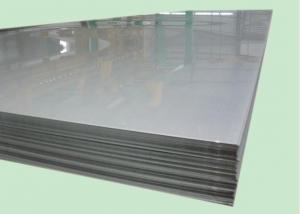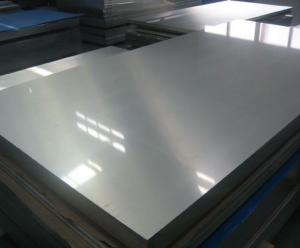Stainless Steel Coil Hot / Cold Rolled 304/316 NO.1/ 2B/ BA
- Loading Port:
- Tianjin
- Payment Terms:
- TT OR LC
- Min Order Qty:
- 20 m.t.
- Supply Capability:
- 4000 m.t./month
OKorder Service Pledge
OKorder Financial Service
You Might Also Like
Hot rolled & Cold rolled Stainless Steel Sheet/ Coil 304/ 316/ 304L/ 316L
Product details:
Item | 304/ 316 stainless steel coil manufacturer |
Technical | Hot rolled and cold rolled |
Standard | ASTM A240,GB/T3280-2007,JIS4304-2005,ASTM A167,EN10088-2-2005,etc |
Surface | 2B,2D,BA,NO.1,NO.4,NO.8, 8K, mirror ,checkered ,embossed ,hair line, sand blast, etching, etc |
Thickness | 0.01~30mm |
Width | 1000mm,1219mm,1500mm,1800mm,2000mm,2500mm,etc |
Package | Standard export package, suit for all kinds of transport, or as required |
MOQ | 20mt |
Export to | Ireland,Singapore,Indonesia,Ukraine,Saudi Arabia,Spain,Canada,USA, Brazil,Thailand,Korea,Iran,India,Egypt,Malaysia,Dubai,Viet Nam,Peru,Mexico,South Africa,Kuwait,Oman,Russia,etc |
Container Size | 20ft GP:5898mm(Length)x2352mm(Width)x2393mm(High) 40ft GP:12032mm(Length)x2352mm(Width)x2393mm(High) 40ft HC:12032mm(Length)x2352mm(Width)x2698mm(High) |
Application | Stainless steel coil applies to construction field, ships building industry, petroleum, chemical industries, war and electricity industries, food processing and medical industry, boiler heat exchanger, machinery and hardware fields. Stainless steel coil can be made according to the customers requirements. |
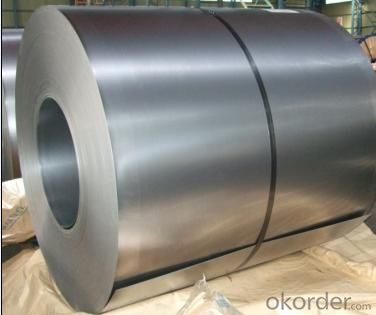
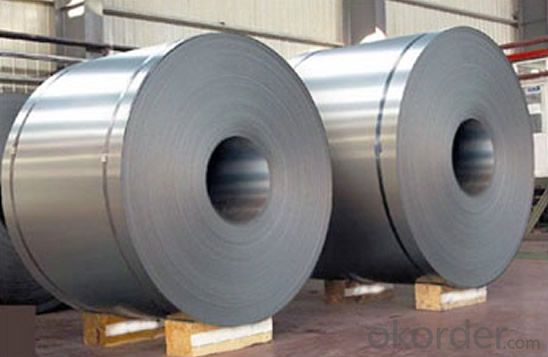
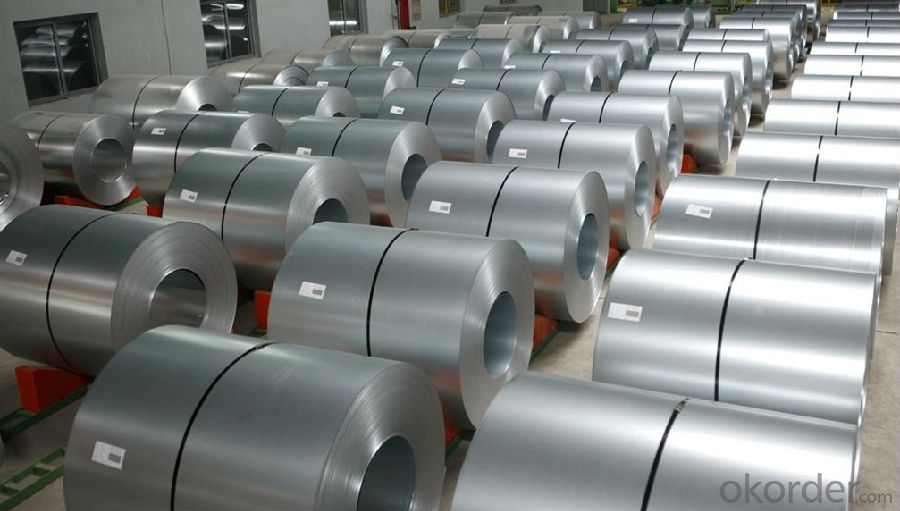
- Q: Can stainless steel strips be used for outdoor applications?
- Yes, stainless steel strips can be used for outdoor applications. Stainless steel is known for its corrosion resistance, which makes it highly suitable for outdoor use. It can withstand exposure to various weather conditions, such as rain, snow, and sunlight, without rusting or deteriorating. Additionally, stainless steel is durable, strong, and has a long lifespan, making it an ideal material for outdoor applications. Whether it is used for construction, architectural elements, or decorative purposes, stainless steel strips can withstand the harsh outdoor environment and maintain their integrity and appearance over time.
- Q: What is the thickness range of stainless steel strips?
- The thickness of stainless steel strips can vary depending on the specific application and requirements, encompassing a range. In general, these strips are offered in thicknesses between 0.02 millimeters and 5 millimeters. Nevertheless, it is crucial to acknowledge that tailored thicknesses can be produced to cater to individual needs. The choice of the suitable thickness hinges on factors including the intended purpose, structural necessities, and desired visual appeal.
- Q: Are stainless steel strips suitable for HVAC applications?
- Yes, stainless steel strips are suitable for HVAC applications. Stainless steel is highly resistant to corrosion, which is important in HVAC systems where moisture and chemical exposure can occur. Additionally, stainless steel is durable, strong, and can withstand high temperatures, making it ideal for use in HVAC systems.
- Q: How do stainless steel strips perform in the presence of ammonia?
- Ammonia is generally well tolerated by stainless steel strips, which are widely recognized for their outstanding resistance to corrosion. This resistance is particularly evident when it comes to ammonia and its compounds, thanks to the high chromium content present in stainless steel. This chromium forms a protective layer on the surface, effectively shielding the metal from any reactions with ammonia. Moreover, stainless steel's non-porous nature further enhances its ability to repel ammonia and reduce the likelihood of corrosion. Nevertheless, it is worth noting that the performance of stainless steel strips in the presence of ammonia can be influenced by various factors, including the concentration and temperature of the ammonia solution, as well as the specific grade and surface finish of the stainless steel. Consequently, it is advisable to seek guidance from stainless steel manufacturers or corrosion experts when using stainless steel strips with ammonia. This way, the most suitable material selection and maintenance practices can be ensured for specific applications involving stainless steel strips and ammonia.
- Q: How are stainless steel strips made?
- Stainless steel strips are manufactured through a process known as cold rolling. This involves passing a stainless steel coil through a set of rollers at room temperature, which gradually reduces the thickness and increases the length of the coil. Initially, the stainless steel coil is unwound and cleaned to remove any dirt or impurities. It then goes through a series of rolling mills, where the thickness is progressively reduced. Each mill consists of two or more rollers that exert pressure on the metal, causing it to elongate and become thinner. The process is repeated several times until the desired thickness is achieved. As the stainless steel strip gets thinner, it becomes more rigid and difficult to manipulate. To counteract this, annealing is performed at specific intervals during the rolling process. Annealing involves heating the strip to high temperatures and then allowing it to cool slowly. This helps to relieve internal stresses and improve the strip's ductility. After the cold rolling and annealing stages, the stainless steel strip may undergo additional processes, such as descaling, pickling, and passivating. Descaling removes any scales or oxides that may have formed on the strip's surface during rolling. Pickling involves treating the strip with an acid solution to remove any remaining impurities. Passivation is a final step that enhances the stainless steel's corrosion resistance by forming a thin, protective oxide layer on its surface. Once all these processes are complete, the stainless steel strip is cut to the desired length and packaged for shipment or further processing. It can be used in a wide range of applications, such as automotive components, kitchen appliances, construction materials, and electronic devices, due to its excellent strength, durability, and resistance to corrosion.
- Q: What are the common uses of stainless steel strips in the food manufacturing process?
- Due to their unique properties and hygienic nature, stainless steel strips find wide application in the food manufacturing process. Some typical uses of stainless steel strips in this industry include: 1. Conveyor Belts: Food processing plants commonly employ stainless steel strips as conveyor belts. These strips possess corrosion resistance and can withstand high temperatures, making them suitable for transporting food items throughout various production stages. 2. Food Processing Equipment: Stainless steel strips are utilized in the construction of equipment such as mixers, blenders, grinders, and slicers. The strength and durability of these strips ensure that the equipment can withstand the demanding requirements of food processing while maintaining a clean and hygienic surface. 3. Food Storage and Handling: Stainless steel strips are used to fabricate storage containers, shelves, and racks in food manufacturing facilities. The non-reactive nature of stainless steel guarantees that it won't contaminate food products, thereby preserving their quality and safety. 4. Food Packaging: Stainless steel strips are employed in the production of food packaging materials, including cans, trays, and lids. These strips provide robust and durable packaging, safeguarding the food from external contaminants and ensuring its freshness and longevity. 5. Heat Exchangers: The construction of heat exchangers, which play a crucial role in the food manufacturing process, often involves stainless steel strips. Heat exchangers facilitate the heating or cooling of food products, maintaining the desired temperature for processing, pasteurization, or storage. 6. Sanitary Fittings: Stainless steel strips are used to fabricate sanitary fittings such as pipes, valves, and connectors. These fittings are vital in maintaining a hygienic environment in food processing facilities, as stainless steel is easy to clean, resistant to bacterial growth, and does not contaminate food products. Overall, the widespread usage of stainless steel strips in the food manufacturing process revolves around their corrosion resistance, durability, cleanliness, and ability to preserve food quality and safety.
- Q: Can stainless steel strips be used in the construction equipment industry?
- Certainly, the construction equipment industry can utilize stainless steel strips. Renowned for its superb corrosion resistance, durability, and strength, stainless steel proves to be suitable for a wide range of construction equipment applications. In particular, stainless steel strips find utility in reinforcing structures, fabricating components, and crafting bespoke parts for construction machinery. Their impressive resistance to rust and corrosion renders them perfect for demanding outdoor tasks and heavy-duty applications. Moreover, thanks to stainless steel's exceptional strength-to-weight ratio, lightweight yet robust equipment can be manufactured, thereby enhancing efficiency and performance. All in all, stainless steel strips emerge as a valuable asset within the construction equipment industry due to their durability, corrosion resistance, and adaptability.
- Q: Can stainless steel strips be used in pulp and paper industries?
- Yes, stainless steel strips can be used in pulp and paper industries. Stainless steel is highly resistant to corrosion and has excellent strength and durability, making it ideal for various applications in these industries such as forming, cutting, and packaging machinery. Additionally, stainless steel strips can withstand high temperatures and exposure to chemicals, making them suitable for use in harsh environments commonly found in pulp and paper production.
- Q: What are the common uses of stainless steel strips in the petrochemical industry?
- Stainless steel strips are commonly used in the petrochemical industry for a variety of purposes such as constructing equipment and pipelines, manufacturing storage tanks, and fabricating heat exchangers. They provide excellent corrosion resistance, high temperature resistance, and durability, making them suitable for handling various chemicals and harsh environments encountered in the petrochemical sector.
- Q: What type of stainless steel is magnetic stainless steel?
- Model with magnetic stainless steel: martensite or ferrite: such as 430, 420, 410 and so on, is magnetic.
Send your message to us
Stainless Steel Coil Hot / Cold Rolled 304/316 NO.1/ 2B/ BA
- Loading Port:
- Tianjin
- Payment Terms:
- TT OR LC
- Min Order Qty:
- 20 m.t.
- Supply Capability:
- 4000 m.t./month
OKorder Service Pledge
OKorder Financial Service
Similar products
Hot products
Hot Searches
Related keywords
